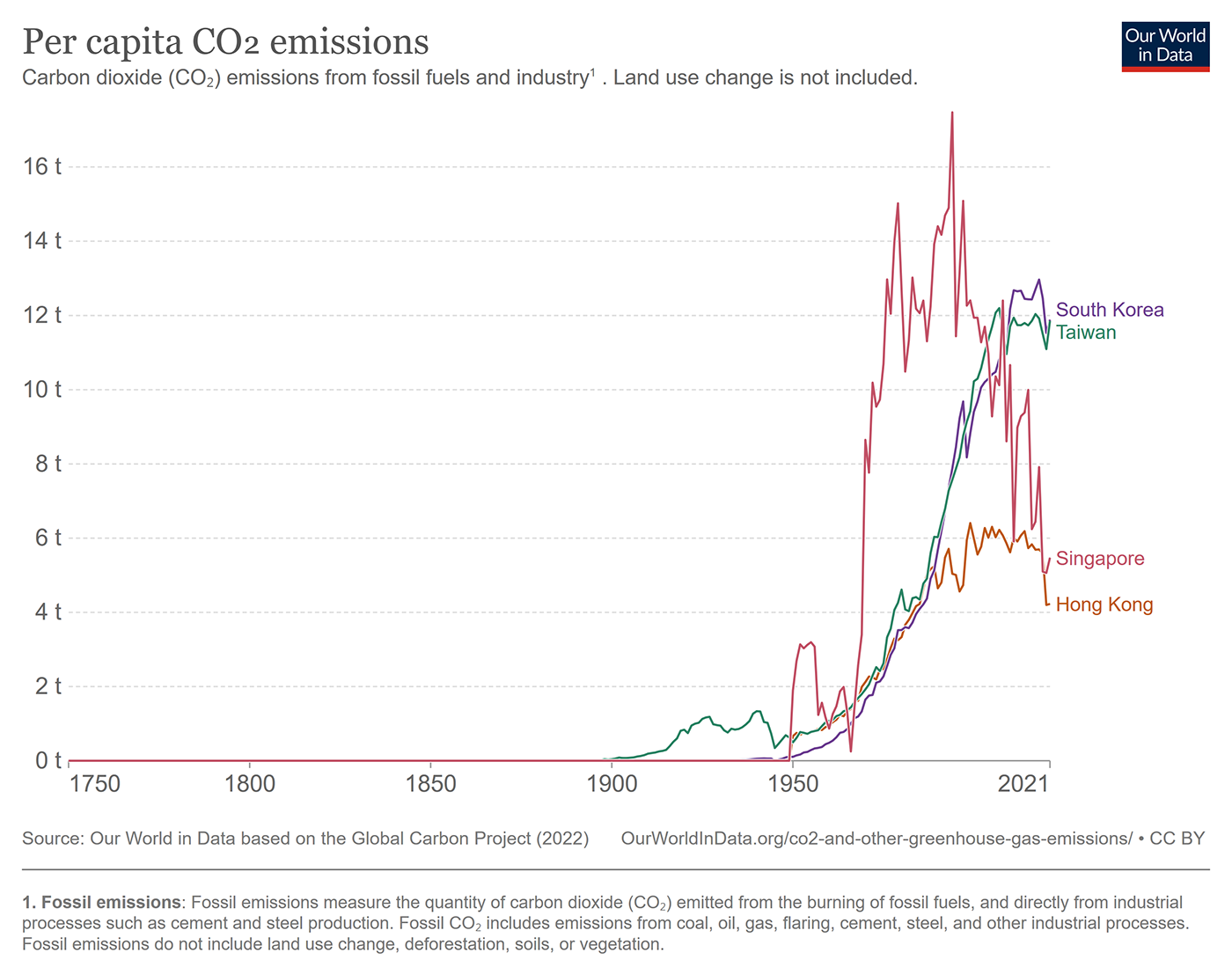Decoupling GDP and CO2 emissions in Singapore
Between the early 1960s and 1990s, the Four Asian Tigers, also known as the Four Little Dragons, refer to the economies of Hong Kong, Singapore, South Korea, and Taiwan. These four countries experienced rapid industrialization and economic growth in the latter half of the 20th century, achieving high levels of development and becoming major players in the global economy. They are so called because their rapid economic growth and development was likened to the speed and ferocity of tigers. The Four Asian Tigers are known for their strong export-driven economies and highly skilled labor forces, and they have played a significant role in the economic development of Asia.
Today, these four countries are still considered to be economically developed countries with high levels of GDP per capita and strong export-driven economies. They continue to be major players in the global economy and have established themselves as regional economic powerhouses.
However, like all countries, the Four Asian Tigers have faced their own set of challenges and opportunities in recent years. For example, Hong Kong has faced political unrest and ongoing tensions with mainland China, while Taiwan has faced increased economic competition from other countries in the region (and increased political instability between China-US recently). Singapore and South Korea have also faced challenges such as slowing economic growth and an aging population. Despite these challenges, the Four Asian Tigers have remained economically successful and continue to be viewed as examples of rapid economic development.
How about their Greenhouse Gas emissions?
To some extent, greenhouse gas (GHG) emissions tend to be positively correlated with economic development. This is because as a country's economy grows and produces more goods for export, it typically consumes more energy, which can lead to an increase in GHG emissions if fossil fuels are being used as the primary energy source. So theoretically if a country does not do anything to curb the consumption, the emissions will be increased with little or no sign to stop.
According to "Our World in Data", we can see these four countries have divergent pathways in two statistical approaches:
In terms of annual CO2 emission, South Korea and Taiwan are increasing while the other two are decreasing since 2000s. In terms of per capita CO2 emission, the situation remains the same as the former. So what happened to Singapore specifically? Are they manage to decouple the emission from growing the economy?



The third chart shows Singapore decoupled its emissions from growing GDP since 2010 and onward, but how do they manage to do that ? What are their goals and strategies ?
I will write the next article to find out more.
by Chen Chung Tan
8th Jan 2023
